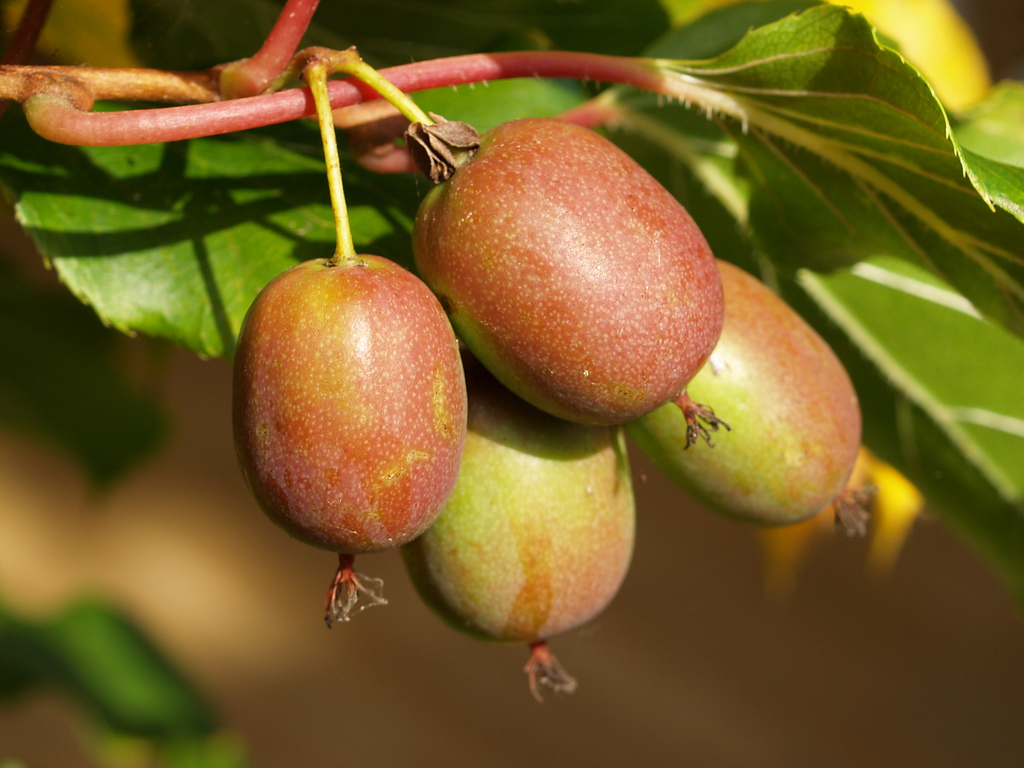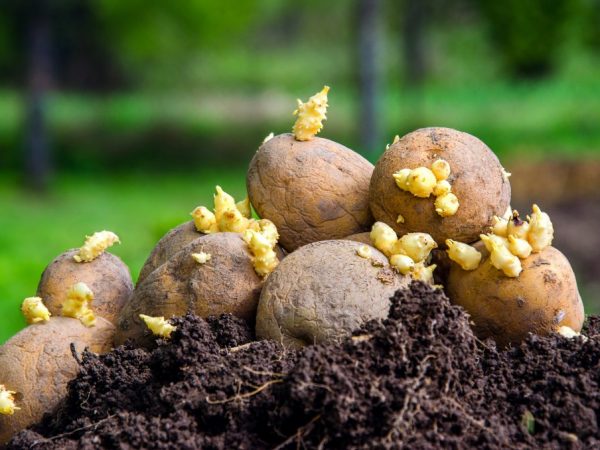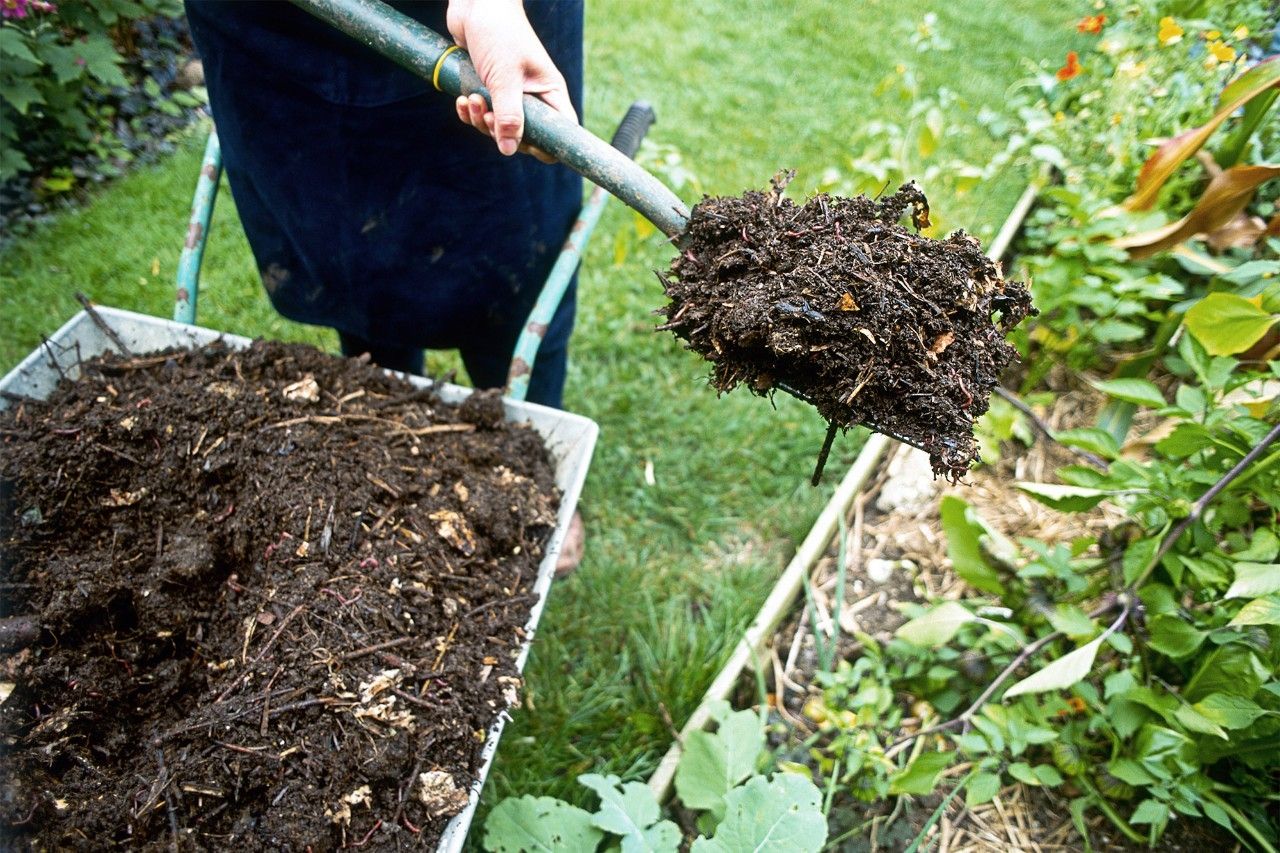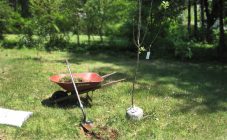Honeysuckle is an edible berry grown in the central regions, southern cities and northern regions of Russia. The plant is distinguished by its unpretentious care, high taste and increased frost resistance. Honeysuckle planting and care in the Moscow region is distinguished by the rules for rooting a seedling and growing it. Proper care will allow you to get a rich harvest.
Content:
Honeysuckle varieties for the Moscow region
The shrub berries are grown not only to decorate the garden, but also to produce ripe aromatic berries. The plant has benefits for the body, having a beneficial effect on the internal systems and organs of a person.
For planting the plant, the best varieties of honeysuckle edible for the Moscow region are selected, their description:
- Bakchar giant - the name of the plant speaks for itself: the height of the shrub reaches 2 m, the width is 1.3-1.5 m.The crown is lush, spreading, requires pruning, the berries are large - up to 5 cm in length and up to 2.5 cm in diameter. Fruits begin to ripen early, in June. From a bush harvested from 3 kg of harvest. Resistant to infection by pathogenic bacteria. Berries are used both for fresh consumption and for making jams and culinary desserts, the taste is sweet;
- Long-fruited - fruit ripening is recorded early, the length of the berry does not exceed 2.7-3 cm in length. The foliage is lance-shaped, the crown is wide, spreading. The shrub is not tall - up to 1 m in height. The foliage has a dark green tint. The appearance of the berries is a blue-violet tone with a slight dusting, of an elongated type. When consumed, sourness is felt, but bitterness is not observed. When ripe in the last days of June, an average degree of shedding is noted. Not more than 2.5 kg are collected from the bush;
- Altair - berries of a blue tone with spraying, do not fall off when ripe, for a long period of time they keep on the branches. Not afraid of frost, pests and diseases. Fruit ripening is recorded at the end of June. The bush is of average height - 1.4 m, the branches are squat, not spreading. The weight of the collected fruits from one plant is 2 kg;
- Blue spindle - has a sparse crown and thin branches, not large in size - up to 1 m in height. Early ripening of berries. Fruits are oblong, large format. The taste is sour. In the absence of watering, bitterness appears. Minus - the berries, after ripening, quickly fall to the ground. The bush gives from 1.5 kg of fruit per growing season to 2.5 kg;
- Moraine - the plant allows you to harvest earlier than usual. The species is not susceptible to diseases and parasitic insects. 1.5 kg of berries are removed from the bush. Fruits are oblong, large, weighing up to 2 g, 2.5 cm long. Taste qualities are dessert, there is no bitterness or sourness.
Before you buy a variety and root it, it is recommended that you familiarize yourself with the best varieties of honeysuckle for planting in the Moscow region.
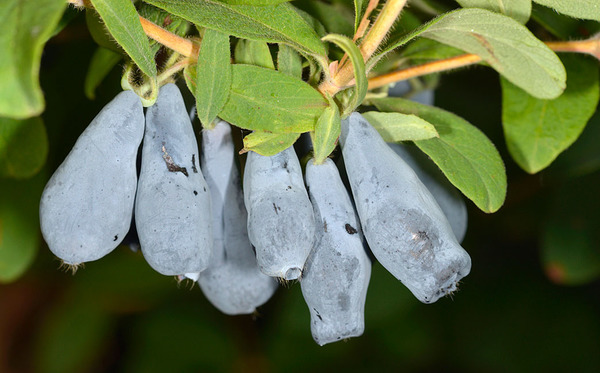
Honeysuckle variety - Morena
Preparing for landing
To get a sprawling shrub that bears fruit annually with large berries, you need to know how to properly plant honeysuckle in the spring in the Moscow region. For rooting seedlings, you should adhere to the following recommendations for soil and site preparation and planting.
Location
The shrub is planted in an open area, well-lit by the rays of the sun and in a well-heated place.There should not be tall fruit crops and other plantings nearby that suck nutrients from the soil and block the bush from the sun.
Caution! You should not place the bush in lowlands or places where groundwater is close to the surface of the earth. Constant humidity negatively affects the root system, provokes the formation of rot and fungal diseases.
Suitable for cultivation is the south side of the building or a fence that covers the Honeysuckle from the cold winds of the Moscow region and penetrating drafts. In the absence of a barrier, the plant will develop for a long time and often be affected by diseases.
Soil selection
The soil is selected with a loose structure, fertile, endowed with nutrients, minerals and vitamins. It must quickly pass the incoming moisture and oxygen necessary for the normal development of the tree. Loamy or sandy loam soil is ideal for planting a seedling.
Important! It is worth abandoning the rooting of the sprout on soil with an acidic pH medium, which has a heavy structure in terms of mechanical composition. Lack of drainage negatively affects the root system.
When preparing the soil substrate, all weeds and other debris that have grown on the territory are removed. A hole is made 1.5 m in size and 0.5 m deep.
The excavated soil mixture is combined with humus in the amount of 3 kg and 1.5 tbsp. wood ash. Additionally, compost and manure are added. Superphosphate (30 g) and potassium sulfate (30 g) are necessarily introduced. The resulting substrate is placed back into the cavity. Pour on top with a bucket of water (10 l), in which 1 tbsp is diluted. lime. The procedure is carried out 2-3 days before the planned planting, so that the applied organic and mineral fertilizers decompose and are absorbed into the soil.
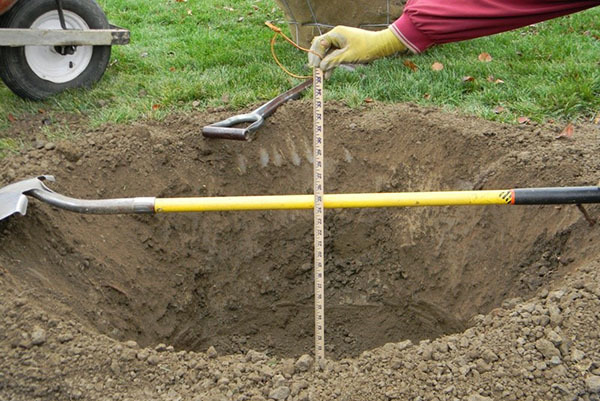
Preparation for planting a seedling in open ground
Planting process
It is recommended to plant honeysuckle in the fall, so the plant will have time to take root and build up the root system, which will make it possible to winter well. If the planting of honeysuckle and care in the Moscow region is carried out in the spring, it is difficult for the bush to develop the root system and keep the ground part in proper shape. When planting in spring, the rooting procedure is carried out until the buds open.
To get a sprawling shrub, you must consider the following planting rules:
- Saplings 2-3 years old are selected - their stem is stronger, the root structure has time to develop;
- A distance of 1.5 m is maintained between the seedlings of honeysuckle - required for normal growth and proper care;
- 3-4 trees are planted - honeysuckle is not a self-fertile crop, requires pollinators;
- Before planting, the bush is carefully examined for damage, dry branches or those affected by diseases. If such is detected, they are cut out;
- If a seedling is purchased with an open root system, then the rhizomes are immersed in an earthen mash before deepening;
- A small hill is made in the dug hole, on which a seedling with straightened rhizomes is installed. Fertile soil is poured on top so that voids do not form. They can collect water;
- It is required to control the depth of the seedling - its neck should be at the level of the soil substrate or lower by 2 cm.
After deepening, the ground near the base of the plant is carefully tamped and a depression is made. Nutrient moisture is poured into it at the rate of 10 liters of water per 1 shrub. To retain moisture in the soil, the trunk circle is covered with mulch. Chopped peat or humus will do.
Correct care
After rooting, honeysuckle in the Moscow region requires proper care. The shrub is long-lived, living in one place for 25 years or more. For a long life, you need to reproduce favorable growing conditions.
Watering
Providing nutritious moisture for edible honeysuckle is an important aspect of life. The soil near the trunk should be kept moderately moist at all times.If the ground dries up, then the foliage of the plant will quickly wither. Abundant watering is carried out as needed, once pouring up to 10 liters of water under the tree.
On dry summer days, it is recommended to additionally water the shrub. It is required to carry out the procedure for irrigating the soil at the time of budding and fruit setting.
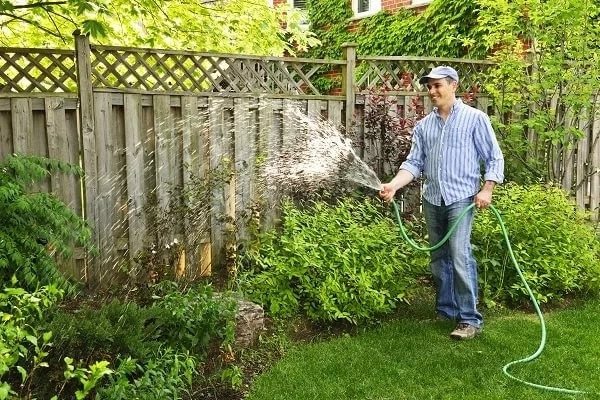
Honeysuckle watering process
Note! Lack of watering negatively affects the taste of honeysuckle. The berries become sour, lose their sweetness, and bitterness appears.
Loosening
After the introduction of nutrient moisture, periodic loosening is carried out. The procedure is required to prevent the appearance of a crust on the surface of the earth, blocking the flow of oxygen and moisture.
Attention! Loosening is not carried out deeply, by 8 cm. Such a minimum depth of embedding of the herringbone is due to the fact that the rhizomes of the plant are located shallowly, they are damaged during deep digging of the earth near the base of the honeysuckle.
Top dressing
In the first 2-3 years after planting a seedling in open ground, the introduction of nutrients is not required. The shrub has enough elements that were added to the soil during planting.
In the 4th year, in the fall, organic and mineral fertilizers are applied: compost (5 kg), wood ash (0.1 kg), double superphosphate (40 gr.). Nutrient rates are calculated per m2. In the spring, the shrub is fed 15 grams. urea (1 tablespoon), which is diluted in 10 liters of water.
Pruning
A young plant does not require removal of excess shoots. The first pruning is carried out at 3 years of age. The time of the manipulations is the moment of foliage falling and the first lowering of the temperature regime.
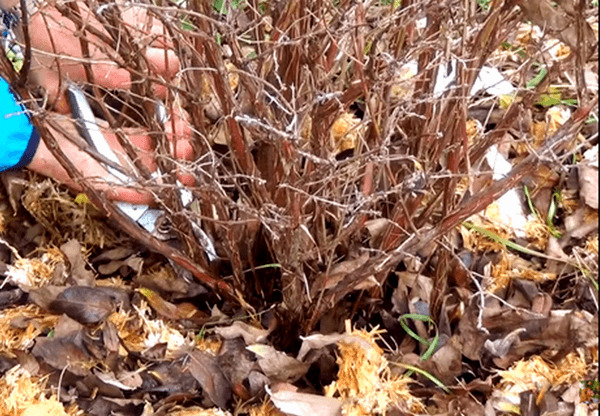
Sanitary and formative pruning of honeysuckle
During pruning, broken, bruised or previously frozen branches are removed. Carry out thinning pruning necessary for the formation of the crown. Garden pitch is applied to the cut sites, which is necessary to prevent the entry of pests or pathogenic bacteria.
Thus, to grow honeysuckle in the Moscow region, you need to decide which variety is better to plant. When planting, take into account the soil and location. Good growth of a bush depends on proper rooting and care.
